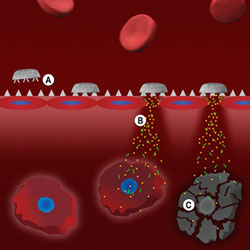Nanotechnology battery dragster sets new EV world speed record
Altairnano Batteries Power Electric Dragster to National Electric Drag Racing Association World Speed Record for Electric Vehicles in the Quarter Mile.
Dec 31st, 2007
Read more
Altairnano Batteries Power Electric Dragster to National Electric Drag Racing Association World Speed Record for Electric Vehicles in the Quarter Mile.
Dec 31st, 2007
Read moreA scientist at Israel's Bar-Ilan University claims that he has managed to create a solar cell 100 times bigger than a typical solar cell, using nanotechnology methods.
Dec 31st, 2007
Read moreTo be located on a two million square metres facility in Riyadh Techno Valley, it will be named after King Abdullah, and serve as an advanced technology research centre for KSU.
Dec 29th, 2007
Read more Panasonic has introduced a new electrical shaver - the ES8228S Vortex Nano Shaver with Nanotech Blades - which it claims 'delivers the sharpest blades for precise and accurate shaving, now with nanotechnology.'
Panasonic has introduced a new electrical shaver - the ES8228S Vortex Nano Shaver with Nanotech Blades - which it claims 'delivers the sharpest blades for precise and accurate shaving, now with nanotechnology.'
Dec 28th, 2007
Read moreIndia has brought together a core group of about a dozen researchers from academia, industry and research spheres to develop a national nanotechnology policy.
Dec 28th, 2007
Read moreThe DC-based research and consulting firm Social Technologies recently released a series of 12 briefs that shed light on the top areas for technology innovation through 2025. The brief on 'nanomaterials,' by futurist Peter von Stackelberg, is the fourth trend in the series.
Dec 28th, 2007
Read moreUsing Sun hardware, AMD quad-core chips, $59 million Ranger expected to run at up to 504 trillion operations per second.
Dec 28th, 2007
Read moreAn online web seminar on January 31, 2008 presented by the American Industrial Hygiene Association (AIHA) will deal wth nanotoxicology issues for assessing and managing occupational exposure risks for nanoparticles in the workplace.
Dec 27th, 2007
Read moreA new generation of ultrafast fiber lasers being developed in Europe is creating more uses for the beams of high-intensity light, while lowering production and maintenance costs and increasing efficiency.
Dec 27th, 2007
Read moreMaterials Today magazine has assembled a list of the top ten advances in materials science over the last 50 years.
Dec 27th, 2007
Read moreA research team led by Prof. PAN Jianwei with the University of Science and Technology of China, the Chinese Academy of Sciences, has been successful in performing Shor's algorithm, a quantum algorithm for factorization, on an optical quantum computer.
Dec 27th, 2007
Read moreResearchers in Germany have been exploring the suitability of self-assembled arrays of quantum dots for nonvolatile storage.
Dec 27th, 2007
Read moreFor dry machining, high hardness and high oxidation-resistance are both important. That's why superhard nanocomposites, which represent a new, advanced generation of wear protective coatings boosting such advantages as high hardness and high oxidation, are important to dry machining.
Dec 27th, 2007
Read moreOn Dec. 4, U.S. Rep. Maurice Hinchey (D-22nd District), announced that Cornell will be one of five universities joining New York State�??s Solar Energy Consortium, which he helped create.
Dec 26th, 2007
Read more Nanomedicine pioneer Mauro Ferrari, Ph.D., and colleagues at The University of Texas Health Science Center at Houston have developed a new way to get intravenous agents for cancer and other diseases to the parts of the body where they�??re needed most and to reduce the amount that goes to others areas where unintended injury can occur.
Nanomedicine pioneer Mauro Ferrari, Ph.D., and colleagues at The University of Texas Health Science Center at Houston have developed a new way to get intravenous agents for cancer and other diseases to the parts of the body where they�??re needed most and to reduce the amount that goes to others areas where unintended injury can occur.
Dec 26th, 2007
Read moreMore than $1 million will go toward the NDSCS Nanoscience Technology program, which can provide unique opportunities to its students that will meet the current needs of business and industry in North Dakota and around the nation.
Dec 26th, 2007
Read more